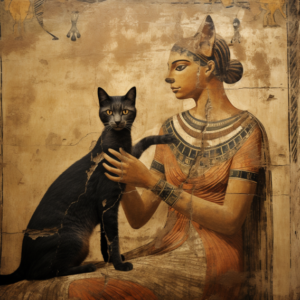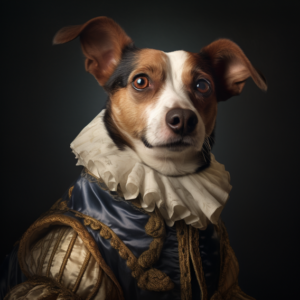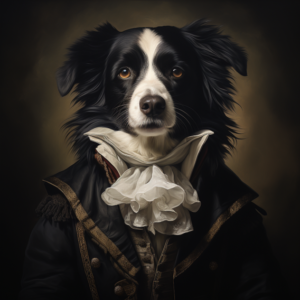Art has always been a powerful medium for conveying symbolism and deeper meanings, and the inclusion of animals in artworks has been a common practice throughout history. Animals, whether domesticated pets or creatures from the wild, often carry significant symbolism and messages in art. In this exploration of pet symbolism in art, we’ll uncover what different animals have represented in various cultures and artistic movements.
Cats: Guardians of Mystery and Independence
Cats have fascinated humans for centuries, and their portrayal in art is equally intriguing. In ancient Egyptian art, cats were revered and associated with the goddess Bastet, representing protection, fertility, and domestic harmony. The aloof and independent nature of cats has also been a symbol of mystery and enigma in European art, often seen as both protectors and keepers of secrets.
One famous artwork that captures the essence of cats’ symbolism is Édouard Manet’s “Olympia” from 1863. In this provocative painting, a reclining nude woman gazes boldly at the viewer while a black cat sits at the foot of her bed. The cat’s presence adds an element of sensuality and independence to the composition, challenging traditional notions of femininity.
Dogs: Loyalty and Companionship
Dogs have earned their place as “man’s best friend,” and this sentiment is beautifully reflected in art. Throughout history, dogs have symbolized loyalty, faithfulness, and companionship. In Christian art, dogs are often depicted as guardians of the faithful and symbols of vigilance.
One notable representation of dogs’ loyalty can be found in Edwin Landseer’s “The Old Shepherd’s Chief Mourner” from 1837. The painting portrays a faithful dog grieving beside the body of its deceased master. This poignant scene captures the unwavering devotion and sorrow that dogs can feel for their human companions.
Birds: Freedom and Spiritual Significance
Birds have a long history of symbolism in art, often representing freedom, spirituality, and transcendence. In ancient Egyptian art, the ibis bird was associated with Thoth, the god of wisdom and writing. In Christian art, the dove is a symbol of the Holy Spirit and peace.
An exemplary depiction of bird symbolism can be found in Hokusai’s “Red-Crowned Crane” from the early 19th century. The red-crowned crane, a symbol of longevity and happiness in Japanese culture, is elegantly rendered in this artwork, embodying the essence of grace and spiritual significance.
[Explore “Red-Crowned Crane” by Hokusai, highlighting the cultural and spiritual symbolism of the crane in Japanese art.]
Fish: Prosperity and Abundance
In various cultures, fish have been associated with prosperity, abundance, and transformation. In Chinese art, the koi fish represents perseverance and determination, as it is known for swimming against strong currents and leaping waterfalls.
An iconic representation of fish symbolism can be found in Gustav Klimt’s “Fish Blood” from 1898. In this allegorical work, Klimt uses fish as a metaphor for life and death, exploring themes of sensuality and transformation.
These are just a few examples of the rich symbolism that animals, including our beloved pets, bring to the world of art. As we continue our journey through pet symbolism in art, we’ll uncover more fascinating stories and meanings behind the creatures that have inspired artists throughout history. Stay tuned for our exploration of the artistic fusion of pets and symbolism.



